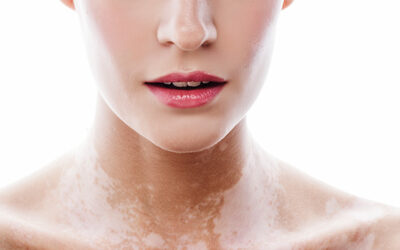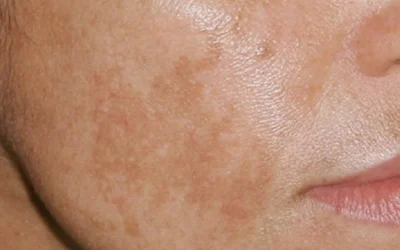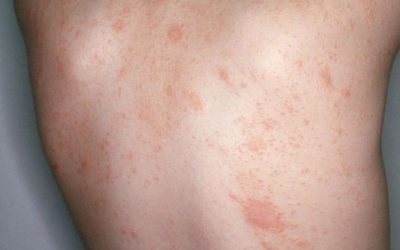Seborrhoeic keratosis
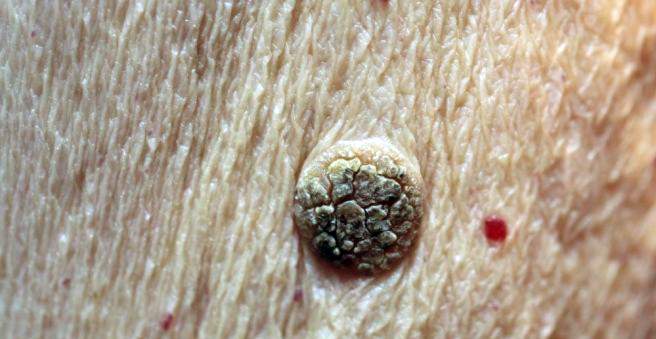
Seborrhoeic keratosis is a benign skin lesion that is usually brown in colour and intensity, with a coarser surface. Seborrhoeic keratoses are caused by a disruption in the detachment of the skin’s surface cells, which accumulate to form a raised, rough plaque.
Clinical signs
- a rough, crumbling surface, a plaque or nodule on the surface of the skin
- brown and all its shades from lightest to almost black
- not flexible, as if sticking to the skin
- painless, non-splashing
- can be present anywhere on the skin of the body except on the palms and soles (mucous membranes, i.e. mouth, genitals, are not present)
Researchers disagree on whether seborrhoeic keratosis can become malignant, with the theory that another malignant lesion forms next to the existing seborrhoeic keratosis being more widely supported. Therefore, if you notice that a skin lesion that has been present for a long time has changed, and that you have a non-healing wound or urination, we would urge you not to delay and to consult a doctor dermatovenereologist.
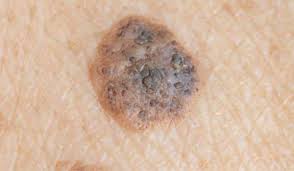
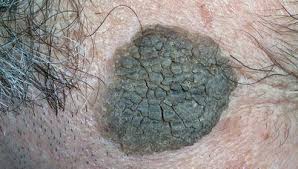
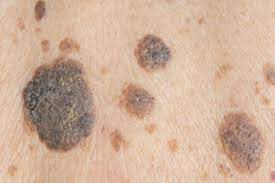
Risk factors
- genetic predisposition (if blood relatives have/had many seborrhoeic keratoses,
the likelihood of having them increases) - prolonged exposure to the sun or solarium
- over 30 years old age
- caucasian race
Diagnostics
- according to the characteristic clinical features listed above
- the diagnosis is clarified by a doctor. by a dermatovenerologist examining the lesion with a dermatoscope
- (a special device that magnifies structures), based on the characteristic dermatoscopic features.
- in the case of unclear lesions, biopsy or surgical removal of the lesion for histological examination
Treatment
Seborrhoeic keratoses are usually removed for aesthetic reasons.
The removal methods available are destructive: cryotherapy (cold treatment in a medical facility using carbon dioxide or liquid nitrogen), electrosurgery, laser. It has been observed that, irrespective of the treatment chosen, seborrhoeic keratosis can reappear in the same place after a few years.
We cannot change the genetic information we bring with us at birth. However, safe exposure to the sun and the use of a cream with SPF 30-50 reduces the likelihood of developing large amounts of seborrhoeic keratoses, even if there is a genetic predisposition.
IMPORTANT:
Seborrhoeic keratosis can be confused with solar slag, pigmented or papillomatous nevi, melanoma, common warts, and squamous cell carcinoma. Due to the wide range of skin lesions that can resemble seborrhoeic keratosis at first glance, we do not recommend treating them at home.

Vitiligo – Why Do White Patches Appear on the Skin and How to Treat Them?
Vitiligo is a non-contagious skin condition characterized by white patches due to the loss of pigment. While it does not pose a direct threat to physical health, it can have a significant psychological impact. Learn what causes vitiligo, its symptoms, how it is diagnosed, and which treatment methods are currently available.
Hyperpigmentation: Causes, Types, and Modern Treatment Options
Hyperpigmentation is a common skin condition characterized by dark spots that appear due to sun exposure, hormonal changes, or skin damage. In this article, you will learn about the main types and causes of hyperpigmentation, as well as how to effectively treat it using modern dermatological methods and preventive care.
Pityriasis rosea
An acute, self-limiting, exanthematic skin disease that manifests as itchy, somewhat inflammatory, scaly rashes, usually on the torso, chest, and upper limbs.
iDerma
MB iDerma
Fabijoniškės g. 99, Vilnius
+370 671 33323
info@iderma.lt

